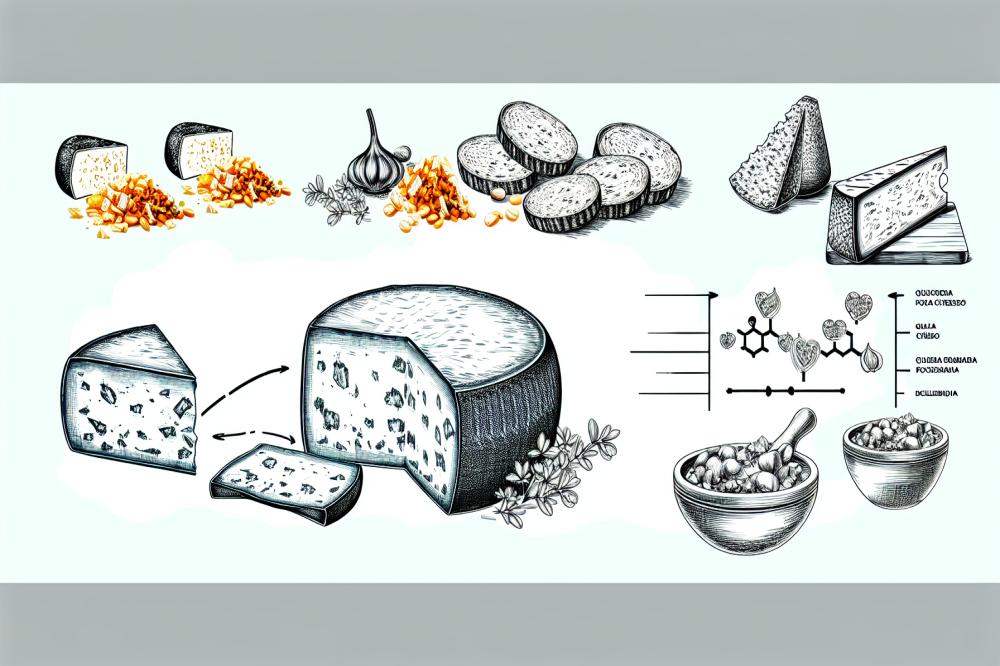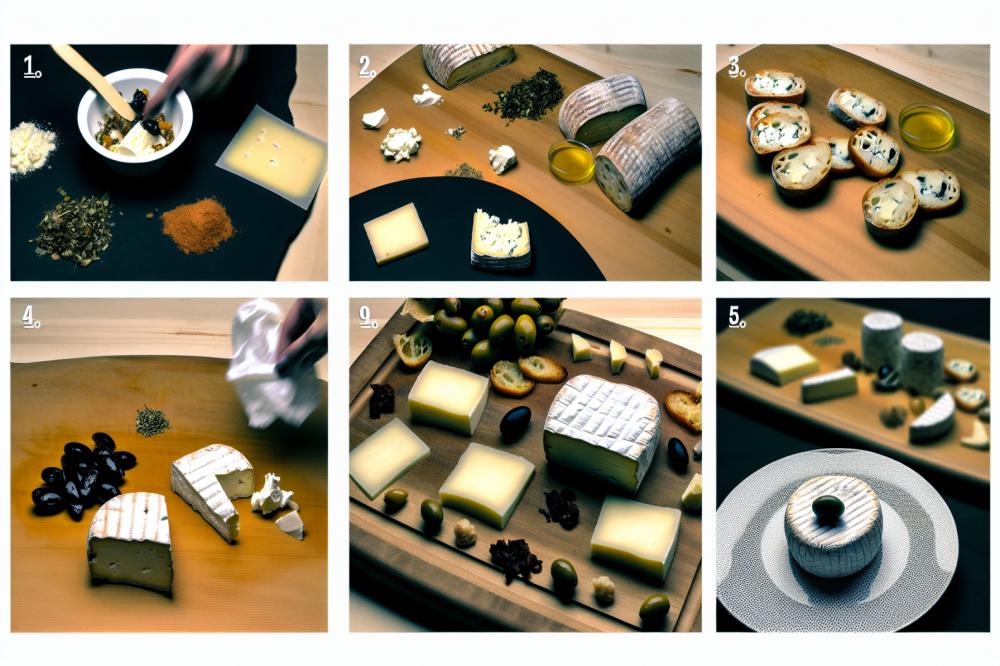Introduction
Queijo de Castelo Branco is a notable cheese from Portugal. Hailing from the Alentejo region, it carries a rich history and tradition. This cheese is made primarily from sheep’s milk, which contributes to its distinct flavor profile. Artisan methods are often employed in its production, reflecting the skills passed down through generations.
This cheese stands out among the diverse selection of Portuguese cheeses available. Its creamy texture pairs well with the slightly nutty and tangy taste. Additionally, the aging process involves the use of special herbs, which further enhances its flavor. Many people appreciate the complexity that comes from these artisanal techniques.
Moreover, Queijo de Castelo Branco not only offers a delightful culinary experience but also serves as a cultural symbol. Serving this cheese can enhance a gathering, adding a touch of tradition. The unique combination of flavors makes it a point of interest for cheese aficionados and casual eaters alike.
In summary, the qualities of this cheese set it apart from others in Portugal. It represents the essence of the Alentejo region and offers a taste of its heritage. Exploring the various attributes of Queijo de Castelo Branco reveals much about the rich landscape of Portuguese cheeses.
Queijo de Castelo Branco

Known for its distinct characteristics, Queijo de Castelo Branco originates from the Beira Baixa region in Portugal. Sheep’s milk serves as the primary ingredient in its creation. This cheese has a long history, rooted in the traditional practices of local shepherds. These artisans have perfected their methods over generations, making the cheese a cultural treasure.
The production process starts with fresh, whole sheep’s milk. After the milk is warmed, rennet is added. This begins the curdling process. Once the curds form, they are cut into small pieces to help separate the whey. After this, the curds are placed into molds. This helps them take shape and remove excess moisture. Salting occurs at various stages to enhance flavor and aid in preservation.
Aging often lasts between 45 days and several months. During this time, the cheese develops a creamy texture and a rich flavor profile. The surface is usually left with a natural rind, which ages similarly to the cheese inside. As it matures, the aroma deepens, becoming more robust and earthy.
Comparison with Other Portuguese Cheeses
When compared to other Portuguese cheeses, such as queijo da Serra and queijo de Azeitão, the differences become evident. Queijo da Serra is made from both sheep’s and cow’s milk, giving it a softer, almost buttery texture. In contrast, queijo de Castelo Branco tends to be firmer with a more crumbly consistency.
A ingredient difference also affects taste. Queijo da Serra often has a stronger, saltier flavor due to the combination of milk types. Azeitão is known for its tangy and slightly spicy notes, which set it apart. On the other hand, Castelo Branco is more mild and nutty. Those who enjoy subtler cheeses will likely prefer it.
Aroma plays a key role in the overall experience of these cheeses. While Queijo da Serra has an intense, pungent scent, Queijo de Castelo Branco offers a gentler, toasted scent. This makes it more approachable for those who might be sensitive to stronger smells.
In terms of culinary use, these cheeses also differ. Queijo de Castelo Branco is often enjoyed on its own or paired with rustic bread and a drizzle of olive oil. In contrast, queijo da Serra is frequently used as an ingredient in various dishes due to its melt-in-your-mouth quality. The variety of flavors and textures among Portuguese cheeses caters to a wide range of palates.
Portuguese Cheeses

Portugal boasts a rich variety of cheeses, each telling the story of its region. Azeitao is a beloved soft cheese, renowned for its strong aroma and creamy texture. Made from sheep’s milk, it often has a distinct tang. It pairs well with crusty bread and local wines, making it a favorite among many.
Queijo da Serra represents the mountainous regions in Portugal. This cheese is also made from sheep’s milk but has a different profile. It comes from the Serra da Estrela region. The texture is creamy and spreads easily, ideal for slathering on toast or using in traditional dishes. Its taste is rich and buttery, sometimes with earthy notes that reflect the pastures where the sheep graze.
Other notable cheeses include Queijo de Nisa and Queijo São Jorge. Queijo de Nisa has a semi-soft texture and is often seasoned with paprika, giving it a vibrant flavor. São Jorge, on the other hand, hails from the Azores. This cheese is hard and has a strong, slightly spicy taste. Both cheeses highlight regional traditions and offer diverse flavors.
Regional variations play a significant role in Portuguese cuisine as well. In the Alentejo region, for instance, cheeses often reflect the local environment and farming methods. They feature a range of textures and tastes influenced by the animals’ diets and the climate. Each type has its own uses in traditional dishes, enriching the culinary landscape.
Among this diverse category, Queijo de Castelo Branco holds its own. This cheese is firm yet creamy, characterized by a strong flavor profile. It is primarily made from sheep’s milk as well. Many enjoy it sliced, paired with olives, or used in various recipes that highlight its rich taste.
Each type of cheese in Portugal fits into the larger tapestry of culinary traditions. Whether used in appetizers or main dishes, they all contribute to the nation’s identity. Cheeses are not just food items; they are part of social gatherings and celebrations.
Recipe: Queijo de Castelo Branco and Olive Tapenade

This recipe combines the rich, creamy flavor of Portuguese cheese with the robust taste of olive tapenade. It’s simple yet delicious, making it an ideal appetizer for gatherings or a quiet night in.
Ingredients:
- 200g Queijo de Castelo Branco
- 100g black olives, pitted
- 50g green olives, pitted
- 2 tablespoons capers
- 2 garlic cloves
- 4 tablespoons olive oil
- Fresh herbs (e.g., parsley, basil) for garnish
Instructions:
- Begin by placing black olives, green olives, capers, and garlic in a food processor.
- Pulse the mixture until it is coarsely chopped; a chunky texture works best.
- While blending, gradually add olive oil until the mixture becomes a paste.
- Cut the cheese into wedges and arrange them attractively on a serving platter.
- Spoon generous amounts of the olive tapenade over the cheese. Add fresh herbs on top for a splash of color.
- This dish pairs wonderfully with crusty bread or crackers. Enjoy!
Nutritional Information:
The nutritional profile of this cheese includes various essential nutrients. Typically, it contains approximately 300-350 calories per 100 grams. Protein content can reach around 20 grams, which contributes to satiety. Fat content ranges from 20 to 30 grams, depending on the specific variety and its production methods.
This cheese is a good source of calcium, which is vital for strong bones and teeth. Iron can also be present, making it beneficial for blood health. Some varieties may include probiotics, known to support digestive health. Overall, integrating this cheese into a balanced diet can offer several health benefits while providing delicious flavors.
Final Thoughts

Queijo de Castelo Branco stands out among Portuguese cheeses for its distinct flavor profile and creamy texture. Made from sheep’s milk, this cheese brings a unique touch to any cheese board. It displays a range of tastes that can be influenced by its aging process, making each bite an experience. Comparatively, many other cheeses in Portugal tend to have sharper or more pungent flavors. As a result, this cheese can appeal to those looking for something smoother and milder.
Its role in the wider assortment of cheese varieties found in Portugal is significant. Many artisanal cheese makers have embraced traditional methods, contributing to the rich landscape of Portuguese dairy. This cheese not only honors its heritage but also complements dishes from various regions. Pairing it with olives or figs can elevate any meal, showing its versatility.
Exploring Portuguese cheeses can be a delightful journey. So many flavors await discovery. Whether you try this specific cheese or delve into others like Serra or Azeitão, each has something unique to offer. Don’t miss out on the chance to create your own cheese platter at home. Try the featured recipe to experience its rich taste firsthand. It’s a wonderful way to appreciate the depth and diversity of Portuguese cheese culture.



